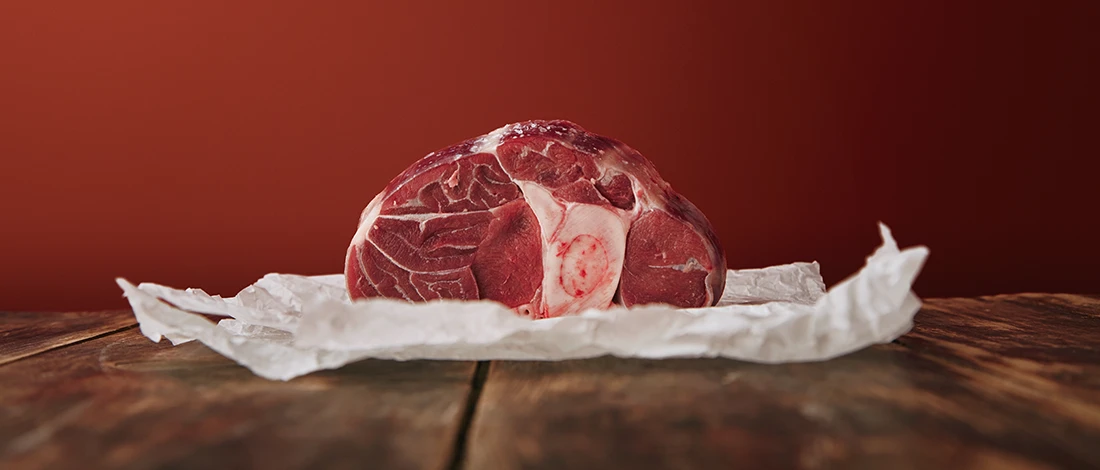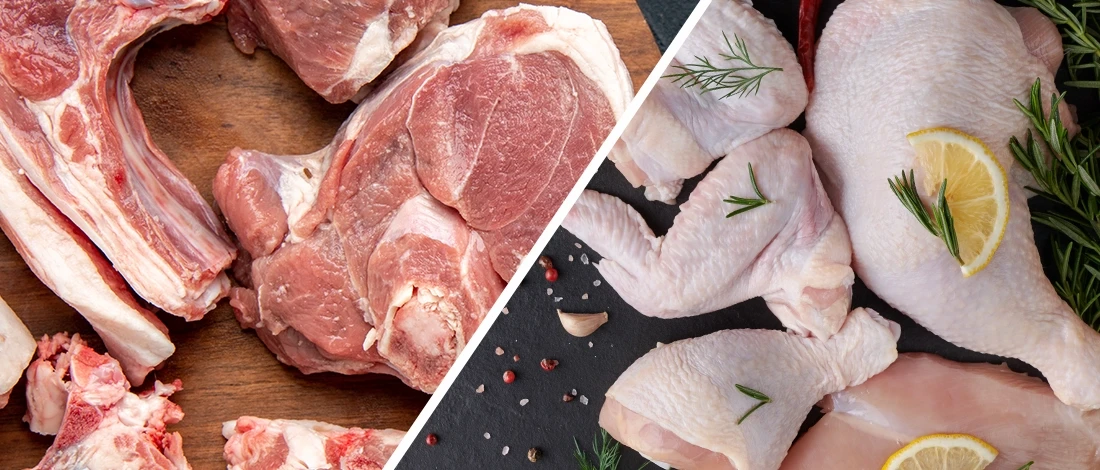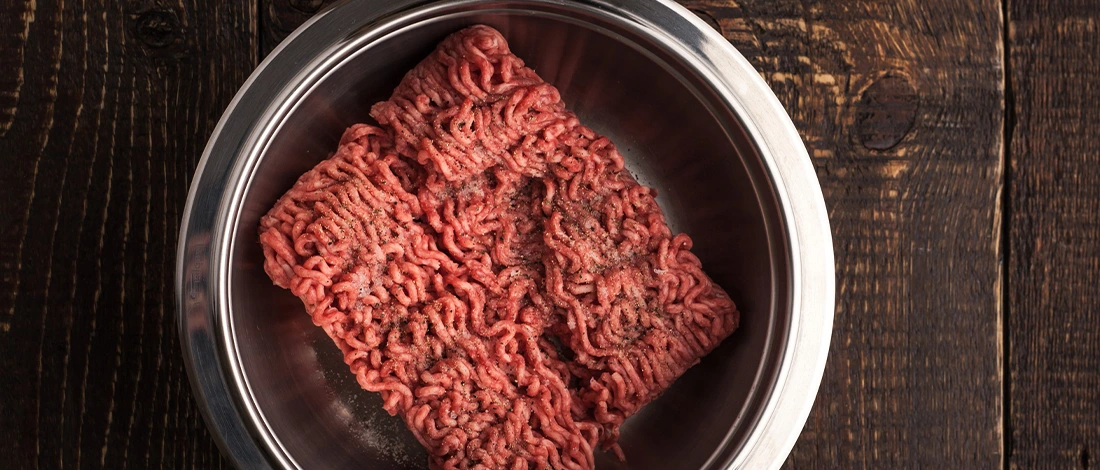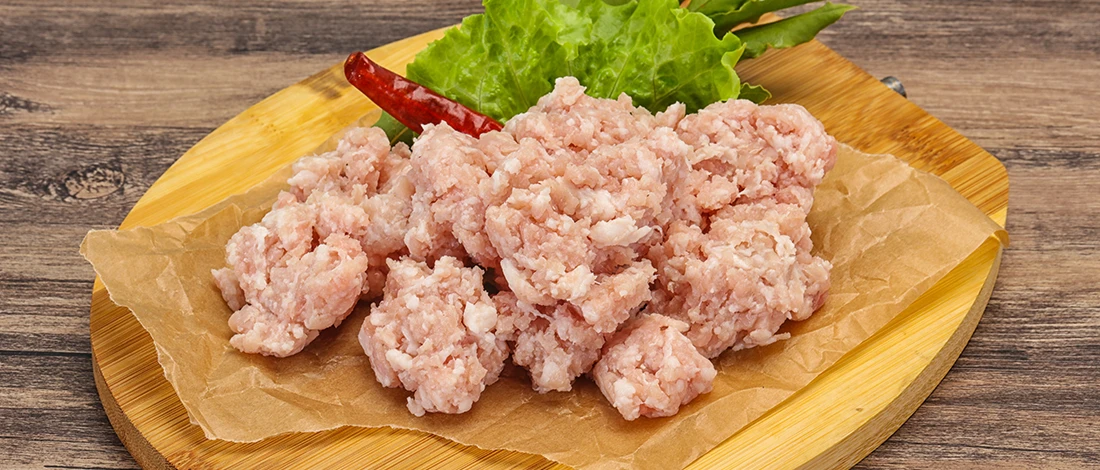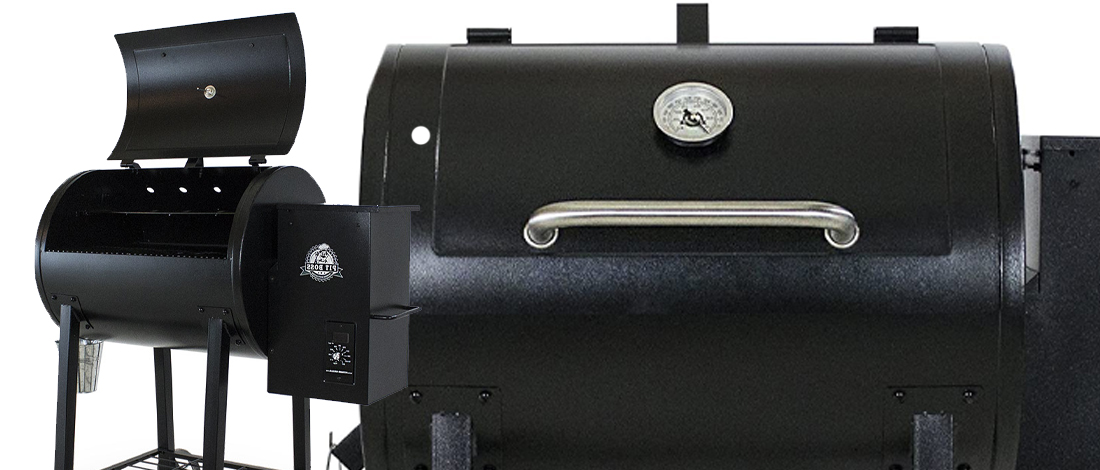If you appreciate ground beef and cook it as frequently as I do, you've probably encountered gray color bits on the interior parts of it.
I’ve been wondering whether gray hues on ground beef mean it’s unsafe to eat, so I spent weeks researching the safety of such meat and compiled my findings in this article.
Here’s all you need to know about handling ground beef that’s got some gray on it.
Quick Summary
- Thawing frozen raw meat in the fridge changes its pigmentation.
- Ground beef turns a bit gray inside when exposed to oxygen.
- Raw and fresh ground beef should be bright red because of myoglobin.
What Causes Ground Beef To Turn Gray?
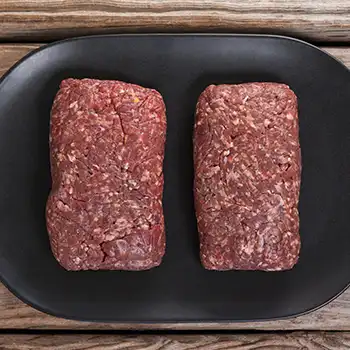
Temperature, light, bacterial growth, and oxygen exposure are some elements that can cause ground beef to turn gray.
Fresh ground beef should be red since it contains oxymyoglobin, a color created when a protein called myoglobin combines with oxygen [1].
This pigmentation changes with prolonged refrigeration or thawing of frozen ground beef.
Iron is a component of myoglobin's chemical structure, and iron will oxidize after a few days of exposure to oxygen [2].
As a result, metmyoglobin is produced, which is what causes the flesh to become grayer [3].
Gray is not a sign of spoilage, so your ground beef is still safe to eat.
"Consumers look at the color of the meat as the first indicator of freshness. The color variations are caused by natural pigments, enzymes, and oxygen content changes."
- Kansas State University Food Scientist
How To Tell If Ground Beef Is Bad?

You can tell if ground beef is bad by checking the color, smell, texture, and expiration date.
1. Color
It's not safe to eat ground beef that has turned gray both inside and outside. Also, if any parts of it are stained white or blue, this may be a sign of mold, and the meat should be tossed immediately.
Related Articles:
2. Smell
An unpleasant smell is always a major red flag when you're questioning the safety of ground beef. You can smell bad ground beef as soon as you open the container since there's no smell in fresh ground beef.
If the ground beef is frozen, it can have the usual meaty smell when you remove it from the package, but if it smells bad, toss it out to be safe.
3. Texture
Fresh ground beef should naturally sink when pressed and have a relatively firm consistency. If the beef is bad, it has a sticky or slimy texture. These gooey textures are often a sign of spoilage bacteria, so ensure it's disposed of properly.
4. Expiration Date
The "best before" date, or the expiration date, indicates when the product is most at risk of going bad [4]. You should not eat ground beef after the expiration date.
When purchasing ground beef, make sure to read the product label thoroughly.
Health Risks Of Eating Bad Ground Beef

It's best to exercise caution to prevent consuming spoiled ground beef and avoid food poisoning.
Bad ground beef contains pathogenic bacteria that cause foodborne illnesses, which are extremely dangerous.
As a result, symptoms like nausea, cramping in the stomach, diarrhea, and fever may appear.
The USDA explains that E. coli and Salmonella are ground beef's most frequently found spoilage bacteria [5].
It must be adequately cooked to kill them and lower your risk of foodborne illness.
Use a meat thermometer to ensure the internal temperature is 160°F to be cautious (71°C).
Also Read: Is Wild Game Meat Safe to Eat?
9 Safety Tips for Handling Ground Beef

The easiest way to prevent food poisoning from ground beef is proper handling and storage.
Below are some safety recommendations:
- Pick a package of ground beef undamaged by dents or holes and feels cold.
- Verify the meat's color and best-before date.
- Buy ground beef last and go straight to your house to reduce the time it spends at room temperature.
- Keep raw ground beef away from other products in your shopping cart to avoid cross-contamination or the transmission of bacteria to different foods.
- Refrigerate or freeze in freezer paper when you reach home or within two hours of the purchase. Ensure the refrigerator is not warmer than 40°F (4°C).
- Store it in a sealed plastic wrap or ziplock bag on the lowest shelf to stop its juices from leaking.
- Put any cooked ground beef in the fridge within two hours of cooking. Eat ground beef within two days of storing it in the refrigerator.
- Thaw it in the refrigerator to keep the beef cool while it defrosts. A maximum of two hours should be spent at room temperature.
- Thoroughly wash your hands, and clean your kitchen counters and utensils after handling them [6].
Also Read: How Long Does Ground Beef Keep in a Fridge
FAQs
Is Ground Beef That Has Turned Gray Bad?
No, ground beef that has turned gray isn't bad if it's the interior meat only. But if the outside is gray, it's spoiled.
What Should I Do If Entire Ground Beef Turns Gray?
If the entire ground beef turns gray, safely dispose of the package by putting it in the trash. Remember to thoroughly wash your hands afterward and inspect your fridge for any meat juices leakage.
Why Does Ground Beef Turn Gray Even When Stored Properly?
The interior part of ground beef turns gray even when stored properly because it's exposed to oxygen, the lack of which is responsible for keeping the meat a bright red.
References:
- https://www.fsis.usda.gov/food-safety/safe-food-handling-and-preparation/meat/ground-beef-and-food-safety
- https://www.ncbi.nlm.nih.gov/books/NBK544256/
- https://ask.usda.gov/s/article/Does-the-color-of-beef-indicate-freshness
- https://www.fsis.usda.gov/food-safety/safe-food-handling-and-preparation/food-safety-basics/food-product-dating
- https://www.fsis.usda.gov/food-safety/safe-food-handling-and-preparation/meat/ground-beef-and-food-safety
- https://www.cdc.gov/ecoli/2019/o103-04-19/index.html


